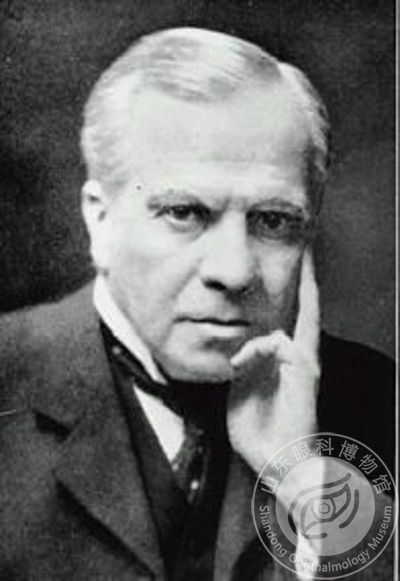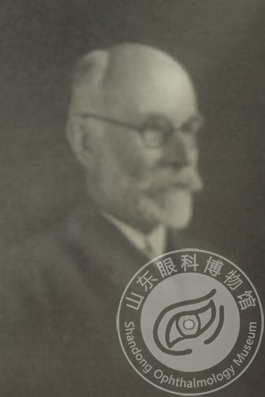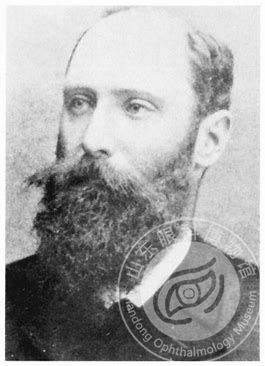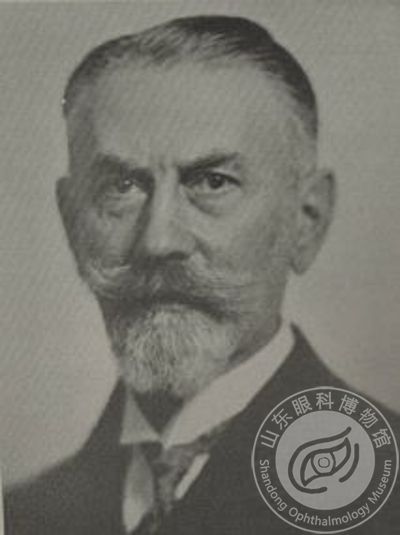生卒年月 1862/01/01 - 1932/01/01
British ophthalmologist,1862 -- 1932.Edward trecher Collins entered Middlesex hospital in 1879 and graduated in 1883.In 1886 he was appointed pathologist and curator of the hospital museum.He held this post until he was appointed hospital surgeon in 1895.As a pathologist, his work in the hospital laid the groundwork for his lectures and the 1896 publication of the anatomy and pathology of the eye.He has made great contributions to the development of ophthalmology at home and abroad.In 1927, he was elected President of the British academy of ophthalmology and the international association of ophthalmologists.His charisma and talent served him well in a difficult period of post-war reconciliation.Treacher Collins syndrome: a defect in the middle and lateral third of the lower eyelid and systemic abnormalities such as maxillofacial muscular atrophy and malformed ears.This is an autosomal dominant disease.
生卒年月 1863/01/01 - 1933/01/01
Maddox (1863-1933), a British surgeon and ophthalmologist, an expert in both binocular vision and strabismus (especially strabismus). He has a high level of expertise in optical therapy and has invented a variety of devices for better eye condition research. Including the Markov rod, Markov double prism, Markov red glass, Markov cross and Markov wing. As an enthusiastic astronomy enthusiast, he also invented a lightning arrester that can be placed on stars and constellations.
Maddox rod: An important and indispensable tool for binocular visual function testing. The Markov rod can be used for horizontal and vertical recessive strabismus, rotational recessive strabismus, and unequal image inspection. It has important reference value in evaluating binocular vision function and disposing of binocular vision abnormalities.
出生日期 1851
Abstract
Although his name is commonly recognized in conjunction with various corneal and anterior segment disorders, Ernst Fuchs' contribution to ophthalmology exceeds purely the delineation of ocular diseases and the detailed description of signs. Fuchs' collection of microscopic samples laid the foundation for anatomical and pathological understanding of blood vessels, muscles, and most other tissues of the eye. Additionally, Fuchs was able to pass on his unique knowledge, educating ophthalmologists at an international level. His textbook was, for many decades, the most extensively used reference book in the field of ophthalmology worldwide.
生卒年月 1867/08/03 - 1939/01/01
German ophthalmologist, born on August 3, 1867, in Konigsberg;He died in 1939.Von hippel received his m.d. in gottingen in 1889.Hipper became a doctor in 1890 and was appointed assistant professor of pathology at the university of Heidelberg in 1893.Here he studied severely infected cadavers, which influenced his subsequent research.In 1892 he began to specialize in ophthalmology and became Dr. Leber's assistant.He studied and lectured on ophthalmology and won an award for his research.In 1897, he was appointed Heidelberg distinguished professor.In 1909, von hippel moved to Halley as professor and director of the ophthalmology clinic, and in 1914 to gottingen as professor of ophthalmology.In 1934, due to poor health, he retired.Von hippel is internationally recognized for his work on the pathological anatomy of the eye.Von Hippel-Lindau: a malignant tumor characterized by retinal hemangioma, small cerebrovascular blastoma, and renal tumor.The condition is autosomal dominant and is now located on chromosome 3.




